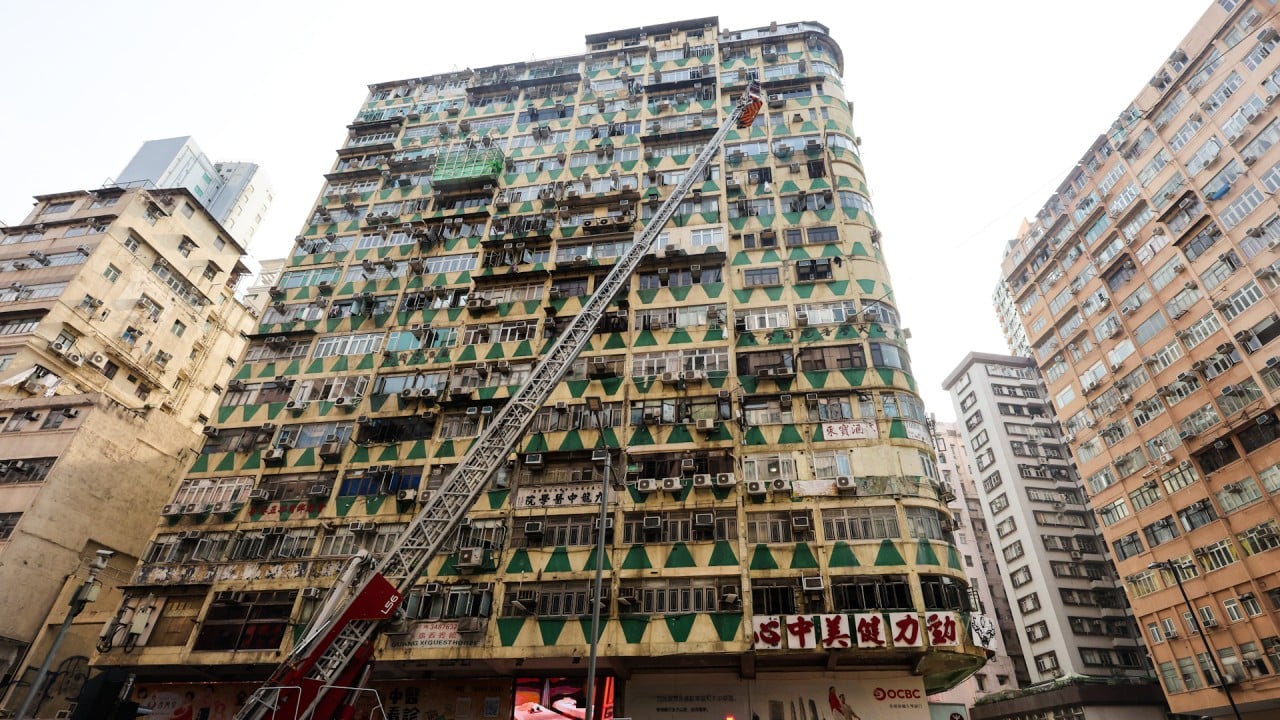
How to fix fire safety in Hong Kong’s ageing buildings
- The latest wake-up call was a deadly fire in a 60-year-old building that had failed to comply with fire safety orders for years
- One way to solve the problem is for the authorities to directly engage contractors to carry out repairs and then charge building owners a high premium
Some problems seem too big to solve, especially those that have been inherited from the past. Over a long period of time, buildings and structures that were once new start to deteriorate and require continuous upkeep. However, it’s impossible to tear down all the ageing buildings in dilapidated neighbourhoods and start afresh.
Meanwhile, the construction sector evolves and introduces new materials and standards; often, building codes also become more stringent to ensure users’ health and safety.
The result is that around the world, building owners and regulators face a cycle of playing catch-up. Given that it is practically impossible for some buildings to meet every new requirement, however, the authorities might only be able to ask that the best possible measures be implemented.
Here in Hong Kong, despite our government’s fiscal strength and our capable civil service, we have not been able to eliminate the problem of ageing buildings that have not complied with regulations. How many times have we walked into an old building without proper egress routes and functional fire doors, or with blocked stairways?
Lam Kin-kwan, commander of the Fire Services Department’s Kowloon South division, said each of the three staircases in New Lucky House could have led 100 people to safety, if compliant with fire safety standards and smoke-free. While the fire was an accident, the lack of safe exits was not.
But allow me to play Monday morning quarterback for a bit. It takes days for a registered inspector to conduct a site walk and report the safety maintenance that needs to be done. It takes about a month to order a fire-rated door that comes with a certificate of acceptance, several days to purchase exit signs and alarms off the shelf, and about a week or two for contractors to install all of the above.
When the Buildings Department issues a statutory notice under the Mandatory Building Inspection Scheme or a fire safety direction, the owners’ corporation of a building has a year to make the necessary rectifications. Understandably, the owners’ corporation is given some breathing room as compliance involves more than the actual inspection and repairs; for example, a consultant has to be engaged and costs have to be figured out.
Non-compliance with safety measures turns out to be a two-way street: while on one side, there are owners who do not follow official directions and take responsibility, on the other side, there are also oversights in enforcing the law and penalising the offenders. No matter how comprehensive and thorough codes and regulations are, if they are not enforced, they might as well not exist.
So is the Buildings Department or Fire Services Department to blame? It’s easy to point fingers, but at the same time we need to be realistic when the problem is too big to be easily solved.
Such a problem would need to be broken into smaller pieces, which are then tackled one by one.

Focus on one street at a time, and if any owners’ corporation does not comply, directly engage contractors to rectify the problem and then charge the owners’ corporation a high premium.
In this way, not only would the repairs be carried out effectively, the authorities would also be sending building owners the message that it is much more cost-effective to do the right thing themselves. As the Chinese saying goes, “Kill one to warn a hundred.”
We need to change the way we do things especially when the current method is clearly not working. Otherwise, we risk another deadly fire.
The news on the New Lucky House fire has quietened down. How many more wake-up calls does Hong Kong need to take action?
Dennis Lee is a Hong Kong-born, America-licensed architect with years of design experience in the US and China


